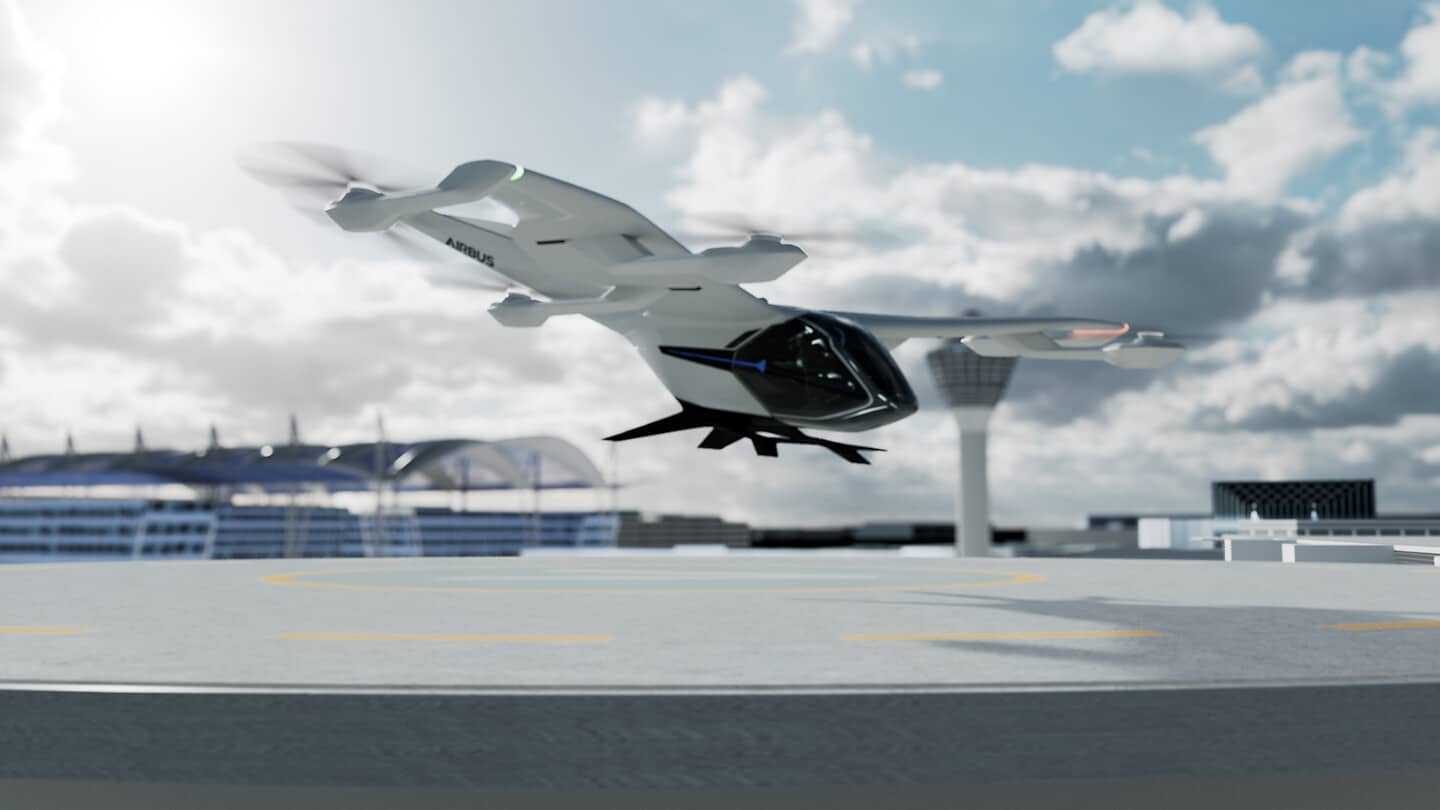Aerospace
Airbus and MAI expand advanced air mobility partnership to provide global coverage

Airbus and Munich Airport International have expanded their global collaboration to develop Advanced Air Mobility solutions.
At the ILA Berlin Air Show, Berlin, Airbus, and Munich Airport International signed a Memorandum of Understanding to begin marketing turnkey solutions to cities and regions interested in developing advanced air mobility (AAM) ecosystems around the world.
Airbus is developing City Airbus NextGen, its electric vertical take-off and landing (eVTOL) aircraft, as well as key support and service offerings, while Munich Airport provides ground infrastructure services and solutions. “We are already collaborating with Airbus on the newly introduced Air Mobility Initiative in Munich – now we are expanding that partnership globally to support select cities and regions around the world,” said Ivonne Kuger, Executive VP Corporate Development MAI. “As Europe’s first 5-star airport, Munich Airport has always been at the forefront of innovation,” says Kuger, “and it is critical for airports to be actively involved in developing and paving the way for this new mode of transportation.”
“The progression of the market, industry, and ultimate service of AAM necessitates a holistic approach, which has been our approach from the beginning.” “In addition to decades of vehicle and technology development, certification, and support, we are actively building working ecosystems with our partners,” said Balkiz Sarihan, Head of UAM Partnerships and Strategy Execution at Airbus. “We are confident that our collaboration with Munich Airport will be a key catalyst for accelerating the development of AAM ecosystems worldwide.”
Airbus has been an innovator in investigating how electric propulsion can aid in the development of new types of aerial vehicles. City Airbus NextGen, the company’s fully electric eVTOL prototype, will be unveiled in September 2021. Airbus is developing an AAM solution with eVTOL not only to provide a new mobility service, but also as an important step in the company’s overall effort to reduce emissions in aviation. The Air Mobility Initiative, a consortium of partners dedicated to the advancement of AAM in Bavaria and Germany, was recently launched by the company.
Top 10 international airports in the world for 2022(Opens in a new browser tab)

Aerospace
Boeing Transfers Rocket Stage to NASA, Paving Way for Human Moon Mission

Boeing has achieved a significant milestone by providing NASA with the second core stage of the Space Launch System (SLS) rocket.
This crucial component, crafted at NASA’s Michoud Assembly Facility (MAF), is set to propel the Artemis II crew into lunar orbit, marking humanity’s return to deep space after a 50-year hiatus.
The monumental Boeing-built rocket stage, the largest element of the Artemis II mission, will embark on a journey aboard the Pegasus barge, traveling 900 miles to NASA’s Kennedy Space Center.
Comparison of two legendary aircraft B777x vs B747 aircraft:Click here
Upon arrival, it will be meticulously integrated with other essential Artemis II components, including the upper stage, solid rocket boosters, and NASA’s Orion spacecraft within the iconic Vehicle Assembly Building. This intricate integration process is a vital step toward the eagerly anticipated Artemis II launch, slated for 2025.
“Boeing-built products helped land humankind on the moon in 1969, and we’re proud to continue that legacy through the Artemis generation,” remarked Dave Dutcher, vice president and program manager for Boeing’s SLS program. “Together, with NASA and our industry partners and suppliers, we are building the world’s most capable rocket and paving the way to deep space through America’s rocket factory in New Orleans.”
NASA, Lockheed Martin Reveal X-59 Quiet Supersonic Aircraft:Click here
The delivery of Core Stage 2 marks a significant achievement in the evolution of the SLS rocket. Towering over 200 feet and powered by four RS-25 engines, this core stage, coupled with two solid-fueled booster rockets, will generate a staggering 8.8 million pounds of thrust. This immense power is crucial to launching Artemis II and future missions into the vast expanse of space.
The SLS rocket stands unparalleled in its capability to transport both crew and substantial cargo to the moon and beyond in a single launch. Its extraordinary capacity will facilitate the delivery of human-rated spacecraft, habitats, and scientific missions to destinations including the moon and Mars, ushering in a new era of space exploration.
-

 Travel1 week ago
Travel1 week agoAir India to Expand US Operations with Three New Routes After a Decade
-

 Travel2 weeks ago
Travel2 weeks agoWhy We Should Avoid These Stamps in a Passport
-

 Airlines1 month ago
Airlines1 month agoInvestigations Reveal Fake Chinese Titanium in Boeing and Airbus Jets
-

 Tech4 weeks ago
Tech4 weeks agoChina’s CATL Plans 1,800-Mile Electric Plane Launch by 2027
-

 Airport3 days ago
Airport3 days agoTop 10 Largest Airports in the World by Size
-

 Aerospace4 weeks ago
Aerospace4 weeks agoChina’s Fighter Jets Turn Wings into Autonomous Drones
-

 Airlines4 days ago
Airlines4 days agoAir India Rolls Out A350s for Delhi-New York JFK and Newark Routes
-

 Defence3 weeks ago
Defence3 weeks agoBoeing Enhances Chinook with New Engines and Block II Upgrades at $96 Million







